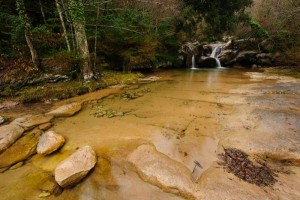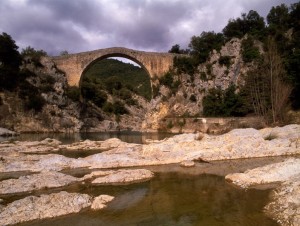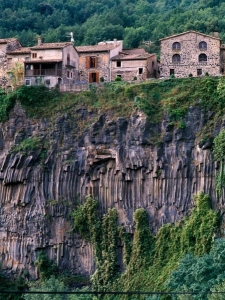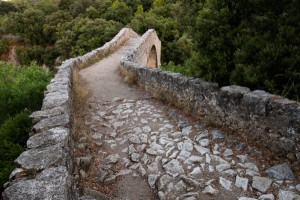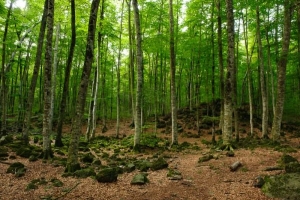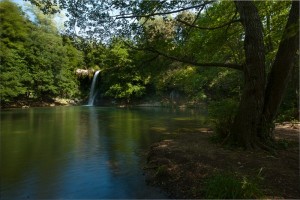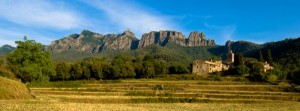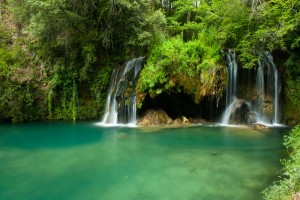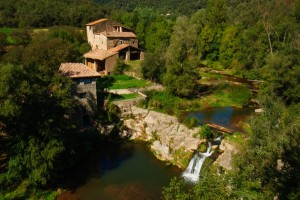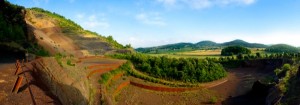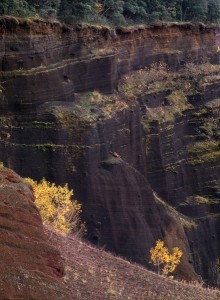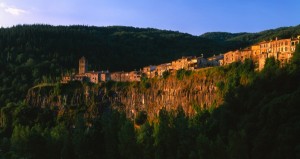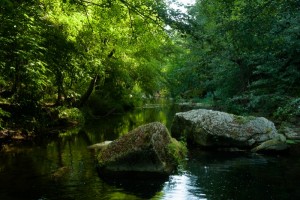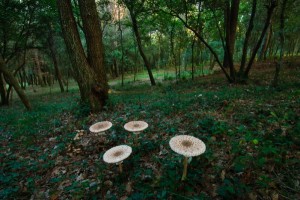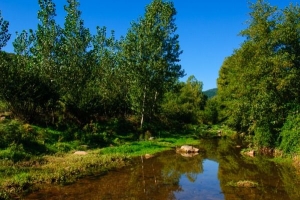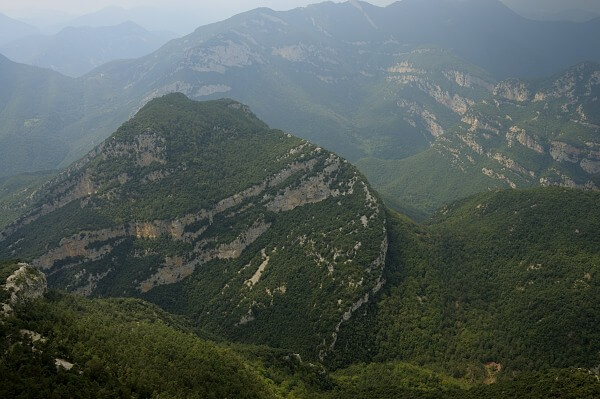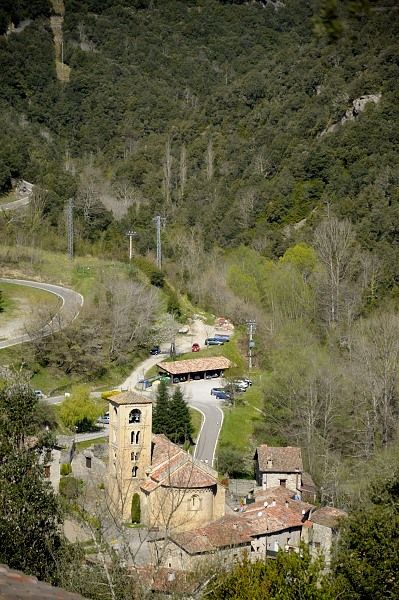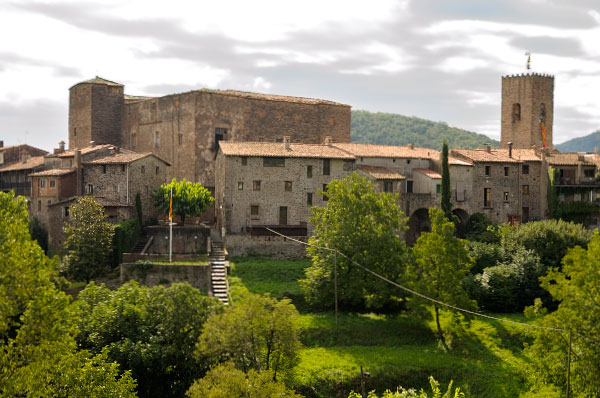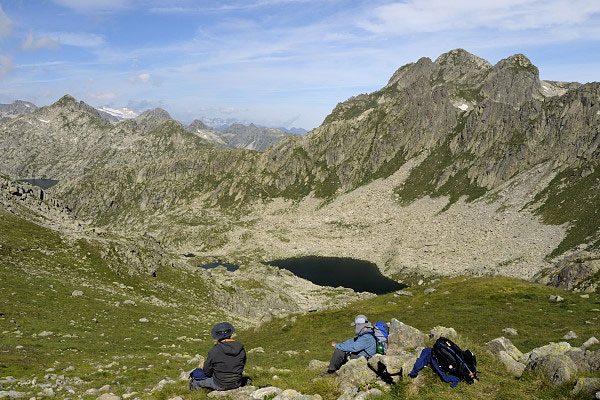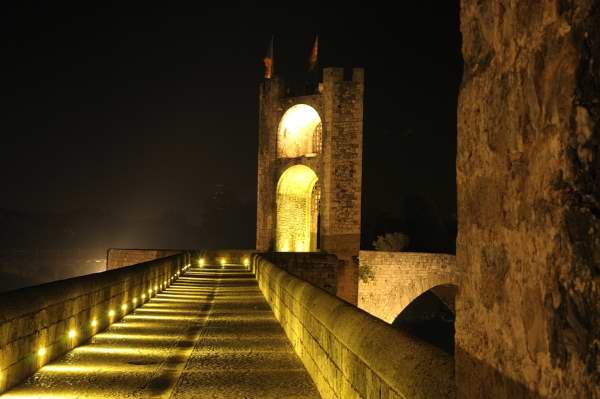
A Walkers Guide to La Garrotxa in Catalonia
A Walkers Guide to La Garrotxa in Catalonia
La Garrotxa is a middle-mountain comarca (‘county’) in the Northeast of Catalonia. It belongs to the Girona province. Its capital is Olot. La Garrotxa can be divided into two completely contrasting parts on all levels:
- On one hand, the northern half, known as Alta Garrotxa, which is part of the Pyrenees, borders to the north with France and appears as a rugged uneven region, calcareous, with few populated areas, traditionally difficult to reach.
- On the other hand, the Baixa Garrotxa is characterised by gentler relief, with abundant forests, fertile soils and materials from the volcanic legacy, which, undoubtedly, along with its high rainfall, has contributed to forging the landscape and character of this comarca.
To learn more about La Garrotxa take a look at the Tourism Office,
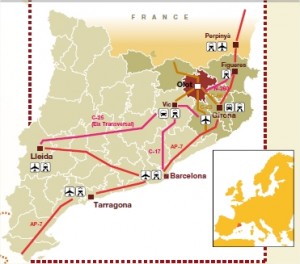
Alta Garrotxa – An Overview
As it has been stated above, it is a rugged, difficult to access region meaning it is largely unexploited by man. Therefore, the area provides the habitat for a very extensive range of wildlife. That’s one of the reasons why it was declared Area of Natural Interest by Catalonia’s Goverment.
Many farmhouses have been abandoned, due to their remoteness or inaccessibility. Fortunately, most of the ancient paths still survive, so that the most hidden and wild places are still reachable by foot. The Alta Garrotxa region contains many examples of Romanesque art including churches, chapels and bridges.
One of the most beautiful villages in Alta Garrotxa is Beget.
Alta Garrotxa Natural Interest Area
It covers an area of about 32,865 hectares. Due to the diversity and singularity, it is undoubtedly the most important area of the eastern Pyrenees.
Geologically speaking, it is a calcareous area, very uneven, with deep valleys, surrounded by cliffs and crags. The landscape of the Alta Garrotxa is really spectacular, due not only to the splendour of the terrain, but also to the superb forests which carpet it.
These forests are mainly made up of holm oaks, white oaks, and by a great variety of botanical species and abundant wildlife.
Baixa Garrotxa
There are four main areas:
- The Olot plain
- The mountains of El Corb and Finestres, with heights of around 1,000m, mark the southern edge of the Olot plein
- En Bas plain, flanked by the eastern foothills of Puigsacalm and Cabrera-Aiats
- The lateral valleys of Riudaura and Bianya, to the west.
The chief centres of population are located along the valleys. The main towns and villages are: Olot, Sant Esteve d’en Bas, Les Preses, Sant Joan les Fonts and Castellfolit de la Roca.
All in all then, we are looking at a territory both varied and peculiar, combining extensive plains with mountain ranges that fashion the relief along with the imprint that the volcanic activity has left. Evidence of this volcanic history is what makes the region so unique as well as the architectural beauty of towns like Olot, Besalú, Els Hostalets d’en Bas or Santa Pau.
La Garrotxa Volcanic Area Nature Reserve
It covers an area of about 13,000 hectares and lies wholly in the comarca of La Garrotxa.
It is formed by forty or so ‘Strombolian’ volcanic cones, some explosion craters and twenty or so basaltic lava flows. The eruptions of these volcanoes were staggered from the Mindel-Riss interglaciar period (350,000 years ago) up to the late Palaeolithic, with a volcanic event about every 10,000 years.
The eruption of El Croscat, 11,500 years ago, put an end to this volcanic activity. As a result of this activity, there are about forty cones left in quite a good state of preservation in general, with sizes ranging from 10 to 160 metres high and 300 to 1,500 metres in diameter at the base. The exuded lava invaded the river valleys, on occasions covering 16km, with thicknesses of up to dozens of metres, sometimes creating small lakes.
It is, however, a relatively highly populated reserve, with several towns and villages right in the middle of the protected area. This interrelation between protected area and urban area, apparently contradictory, has also contributed to shaping the present-day character and appearance of the reserve, especially with the impact that traditional activities have had on the territory over the centuries, such as forestry, farming and livestock rearing.
The Reserve has 26 natural areas specially protected for their geological and botanical interest which mostly preserve the volcanic cones of greater geomorphological interest. On the whole, it is considered to be the best-preserved volcanic area in the entire Iberian Peninsula and one of the most representative of continental Europe.
The Climate
The climate of La Garrotxa is medium mountain Mediterranean. Rainfall is abundant throughout the year, and the winter is the driest season. The frequent showers keep summers cool, while the influence of the Pyrenees makes the winters very cold.
Vegetation
The vegetation reflects the climate. While in the Alta Garrotxa and the east of the county there is an area of typically Mediterranean vegetation, the rest of the county is covered with sub-mediterranean vegetation that becomes Atlantic in the most humid parts. Holm oaks are typical on the sunny hillsides of the eastern sector, with relatively dry and hot summers, the oak tree predominates in other parts, and the beech is found in the most humid sectors. On the Olot plain, the most characteristic natural species is the common oak, although nowadays its presence is limited to small woods found around the town.
If you want more information about any topic covered by this article, please do not hesitate to contact me through this contact form. I will be pleased to help you.



